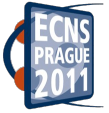Thermal Neutron Capture Facility
Two-germanium-detector system is employed for the study of γ-γ coincidences from (n,g) reactions. The horizontally oriented detectors are placed above and bellow the horizontally oriented target, their axes being mutually parallel. At present, the bottom detector is of the HPGe type with the 20% relative efficiency and the energy resolution of 1.9 keV at Eg= 332 keV, while the Ge(Li) detector with the 12% relative efficiency and 2.1 keV energy resolution at 1332 keV is located above the target. These detectors can be easily replaced by another ones. The distance between cylindrical surfaces of the germanium crystals is 4 cm only. The neutron flux at the target position is (2.8 ± 0.5)·106 n cm-2 s-1 at the reactor power of 8 MW. The coincidence efficiency for a g-cascade from the 60Co source is 3·10 -5, including the effect of the solid angle. The detectors are shielded from g-ray and neutron background in the reactor hall by a combined shielding. The electronic system is based on the standard fast/slow coincidence arrangement. The events are accumulated by a PC computer.

Applications:
The facility was designed primarily for the study of photon–strength functions, but it can also be used for nuclear structure studies via g-g coincidences following the thermal neutron capture.
Instrument Parameters
|
Neutron flux at the target position
|
3·106 n/cm2 s |
|
Cadmium ratio
|
105 |
|
Beam cross section at target position
|
25 x 5 mm2 |
| Detectors | HPGe (20% relative efficiency) Ge(Li) (12% relative efficiency) |
| Coincidence full-energy-peak efficiency | 3·105 for 60Co (1173 keV+1332 keV) |




